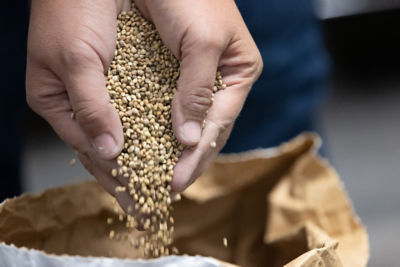Causal Agent
Curly top virus CCTV)
syn: beet curly top virus (BCTV)
Many strains have been reported.
Vector
Beet Leafhopper (Circulifer tenellus and C. opacipennis)
Distribution
Canada, Mediterranean Region, Mexico and USA
Symptoms
Typically, infected plants are erect and stunted in appearance, and severely infected seedlings may die. Leaves thicken with their margins rolling upward as the petioles curve downward. Later, the leaves turn a dull yellow with an accompanying purpling of their veins. Very few fruit are produced, and those that set before infection ripen prematurely. Fruit affected by the disease are dull, small and wrinkled with a dried out appearance.
 Stunted plant with leaf curling.
Stunted plant with leaf curling.
Conditions for Development
This virus has a wide host range of 300 species from which it can be transmitted in a persistent manner only by the beet leafhopper. Sugar beet is a common host for both the virus and leafhoppers. Virus-carrying leafhoppers can be moved by wind into adjacent tomato fields and can also migrate from their overwintering weedy hosts to tomato fields in the spring. Patterns of infection in the field indicate a “raining” of virus-carrying leafhoppers. Little or no secondary spread occurs within a tomato field. Other common hosts for this virus are watermelon, cantaloupe, squash, pepper, spinach and beans.
Control
Spraying insecticides on weeds to control leafhoppers, as well as avoiding beet fields and range land has helped reduce losses from this disease. Double-row planting of processing tomatoes has been used successfully in areas where CTV is present. though it is not known whether this practice actually discourages leafhoppers from visiting plants or whether it allows more individuals to escape infection. Spraying tomato fields for leafhoppers will generally not control curly top.



